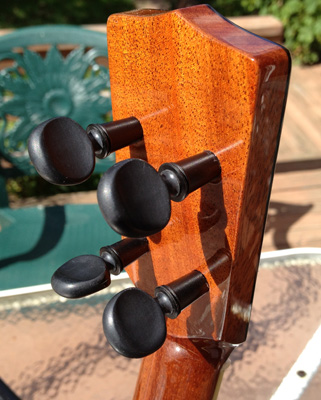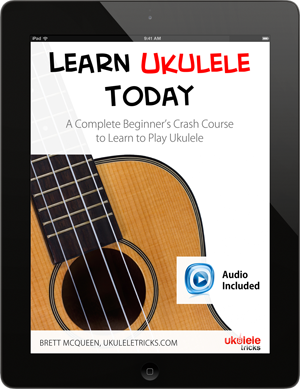Over the next several weeks, we’re going to look at the twelve major scales and how to play those on ukulele. In the most basic way, a scale is a collection of notes arranged in ascending or descending order.
Every scale is built upon a root note called tonic. So in a C major scale, the tonic note of the scale is the note C.
There are only twelve major scales because there are only twelve notes in Western music from which we can build a scale. If we know a C major scale like the back of our hand, we can easily modify it later to play the other major scales.
For a broader explanation about scales, check out my post Ukulele Scales Explained for Beginners.
Why You Need to Learn Scales
Let’s be honest. While memorizing scales and patterns is an excellent exercise for your mind, that process can be quite boring and monotonous. I’m not going to try to tell you otherwise. ![:)]() (How’s that for some motivation?!)
(How’s that for some motivation?!)
However, we don’t learn scales because they are so fun. We learn scales because they equip us to play music that we might have shied away from before just because we didn’t understand it. The biggest part to successfully playing a piece of music is understanding what that song is doing. Scales allow you to understand any song by giving you a context and a framework for the chords and notes you are playing.
Let me unpack what this really means.
For example, if you know your scales, you don’t need a chord diagram (such as my chord library) to tell how you to play a certain chord. This means if you see a weird chord like Gadd9, you know which note to add to the chord and where to add it on the fretboard to make the chord an “add9.”
If you’re a songwriter and you know your scales, all the sudden you have a palette of creative options you can select from to build and create a beautiful and memorable song.
If you enjoy fingerpicking songs, you can look at a piece of sheet music and know exactly what notes to play and where to play them on the fretboard.
It’s true that you can play hundreds of songs without knowing a thing about scales or music theory, but if you really want to take your ukulele playing to the next level, and unlock a lot of creative options, learning scales is essential.
How to Build a C Major Scale
For these lessons on scales, we’re starting with a C major scale because it is the only major scale without any sharps or flats. If you’re at all familiar with a piano, this means the C major scale is only played on the white keys (no black keys).
There are only seven different notes in a C major scale.
The C major scale uses the notes: C, D, E, F, G, A, B.
As you can see on the above musical staff, the C major scale starts on C and goes up to B. After the B note, the scale starts to repeat again, but on a C note an octave higher.
Intervals
As I explained in my previous lesson Ukulele Scales Explained for Beginners, the quality of a scale (e.g. major, minor, etc.) is determined by the intervals between the notes of the scale.
The intervals we want to concern ourselves with are half step and whole step intervals.
![Half Step & Whole Step Half Step & Whole Step]()
As you can see, when you play a note one fret higher than the original note, this is an interval of a half step. When you play a note two frets higher than the original note, this is an interval of a whole step.
A major scale has a specific pattern or arrangement of whole steps and half steps.
Major Scale Interval Pattern
This section here is the key to playing ANY major scale on ukulele.
If we look at the piano keys, it’s easy to see the pattern we use for a major scale. Because in this lesson we are looking at the C major scale, the scale demonstrated on the piano keys is a C major scale.
Again, since this is a C major scale, there are no sharps or flats (we don’t play the black keys). If we start on the C note at the far left and ascend to the B note to the right, we see that our interval pattern for a major scale is whole, whole, half, whole, whole, whole, half.
If we know this pattern, this means we can start on any note of the ukulele, apply this interval pattern of whole steps and half steps, and we have a major scale!
How to Play a C Major Scale on Ukulele
Now that we know how a major scale is built, we can apply this structure to playing any scale. As I mentioned, we want to start learning the C major scale because it has no sharps or flats. If we know the C major scale, we can use this as a starting point for easily learning other scales.
The Easiest Way to Play a C Major Scale
Like I said above, we can apply that whole step, half step interval pattern to any note to build a major scale. However, in order to play a C major scale, we need to build our major scale by starting on a C note (tonic!). Makes sense.
Let’s use our open C string (second to top string) as a starting point to build our C major scale:
![C major scale]()
As you can see, we start by plucking our open C string.
Because we know that the first interval of a major scale pattern is a whole step, we know we have to go up two frets (a whole step!) to get to the D. From there, we continue to apply the whole step, half step pattern of a major scale.
Because we started on a C, this is a C major scale.
The Most Practical Way to Play a C Major Scale
The thing about scales on the ukulele is that it isn’t very practical to play a scale just on one string. The best way to learn scales on the ukulele is to learn them across all the strings and in different positions.
There are five positions from where we can play the notes of a C major scale on the fretboard of the ukulele. For all these positions, the blue note represents the tonic note of a C major scale (the note C is tonic!).
C Major Scale: Position #1
For this position, you want to assign your index finger to fret any of the notes that fall in the 1st fret. Assign your middle finger to fret any of the notes that fall in the 2nd fret, your ring finger to the 3rd fret, and your pinky to the 4th fret.
C Major Scale: Position #2
Like the last position, assign your index, middle, ring, and pinky finger to fret the notes that fall between the 2nd and 5th frets.
C Major Scale: Position #3
This position is a little different. For the notes on the top two strings, your four fingers will hover over the 4th to 7th frets. When you get to the notes on the bottom two strings, your fingers will shift to hover over the 5th to 8th frets to fret the notes.
C Major Scale: Position #4
Assign your four fingers to fret the notes that fall between the 7th and 10th frets.
C Major Scale: Position #5
This is another position where you will need to shift your fingers. For the notes that are played on the top two strings, hover your four fingers over the 9th to 12th frets. For the notes that are played on the bottom two strings, hover your four fingers over the 10th to 13th frets.
If you have a smaller sized ukulele, it’s quite possible you don’t even have enough frets to play this 5th position. That’s okay!
How to Practice These Scale Positions
Learning the pattern of these five different positions is actually really easy with a little bit of practice. You’ll find that these patterns are easy to remember and not that difficult to play in the long run.
The biggest challenge is remembering the individual note names. So as you practice, it’s important to say out loud the note you are fretting.
It’s also extremely important to remember where the tonic notes are across the fretboard. If you can find the tonic note, you can more easily figure out how to play the rest of the scale.
As you practice these scale positions, I would only dedicate 15 to 30 minutes a day. You can practice more if you’d like, but what you’ll find is that your brain will need a rest in order to retain these different scales.
Final Notes
The last thing I want to quickly mention is about the ukulele tuning.
Because the top string of the ukulele is tuned higher than the middle two strings, when you’re playing these positions, it’ll sound a little weird if you’re starting on the top string, because the notes being played in succession are not in ascending order. If this throws you off too much, you can just focus on the position of the bottom three strings for now.
There is A LOT of information in this post. If something didn’t click for you, I encourage you to read this over again very slowly. As always, you can post a question or a comment right below this lesson! I’d love to hear from you and try to help in anyway I can.
We’re going to continue to look at the eleven other major scales on the ukulele. It’s a lot, but if we learn the C major scale, the other eleven are actually quite easy. You’ll see in the next lesson. ![:)]()
C Major Scale: All Positions
 Big things are happening here at Ukulele Tricks.
Big things are happening here at Ukulele Tricks.



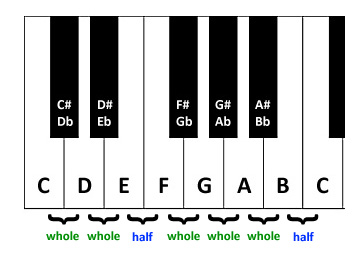































 Please note that if you want to tune your ukulele to low G tuning, you need a special low G string set for your ukulele. If you try to tune the g-string of a regular ukulele string set down an octave, you will find that the string doesn’t hold tension very well and doesn’t stay in tune. To remedy this, you need a thicker, wound low G-string.
Please note that if you want to tune your ukulele to low G tuning, you need a special low G string set for your ukulele. If you try to tune the g-string of a regular ukulele string set down an octave, you will find that the string doesn’t hold tension very well and doesn’t stay in tune. To remedy this, you need a thicker, wound low G-string.  ,
,  , or
, or  sized ukulele (links take you to product pages on Amazon for Aquila low G strings).
sized ukulele (links take you to product pages on Amazon for Aquila low G strings).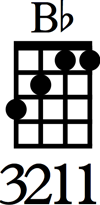 A common question I see in the
A common question I see in the 



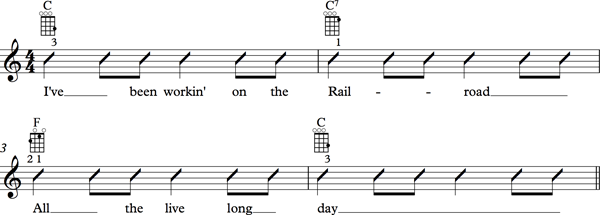
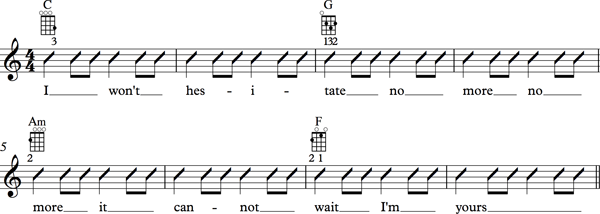








 on the 5th fret of your baritone ukulele’s neck.
on the 5th fret of your baritone ukulele’s neck.  is a cheaper and worthwhile alternative, but in my experience, if you’re not careful with how you place the Kyser capo, it can sometimes pull your strings out of tune relative to one another.
is a cheaper and worthwhile alternative, but in my experience, if you’re not careful with how you place the Kyser capo, it can sometimes pull your strings out of tune relative to one another. 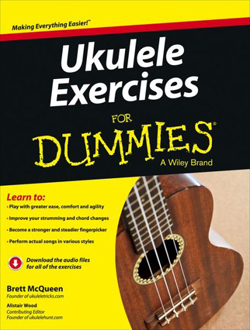


 To celebrate the book’s release, I am giving away a free, brand new Kala Archtop Tenor Ukulele KA-JTE!
To celebrate the book’s release, I am giving away a free, brand new Kala Archtop Tenor Ukulele KA-JTE! For the last month, you could get my new book Ukulele Exercises For Dummies in Europe and even the far reaching corners of the world, like Dubai, but you couldn’t get it here in the US – the US release date kept getting pushed back. As of today, May 6th, 2013, I have some very exciting news for my US friends.
For the last month, you could get my new book Ukulele Exercises For Dummies in Europe and even the far reaching corners of the world, like Dubai, but you couldn’t get it here in the US – the US release date kept getting pushed back. As of today, May 6th, 2013, I have some very exciting news for my US friends.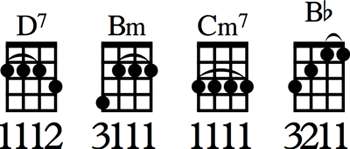
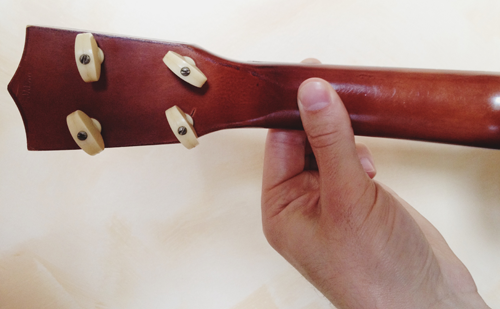
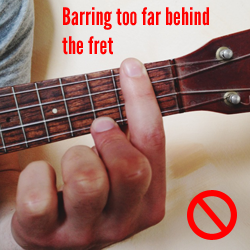
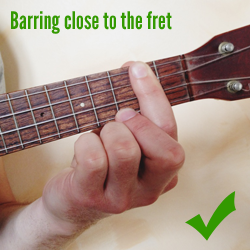
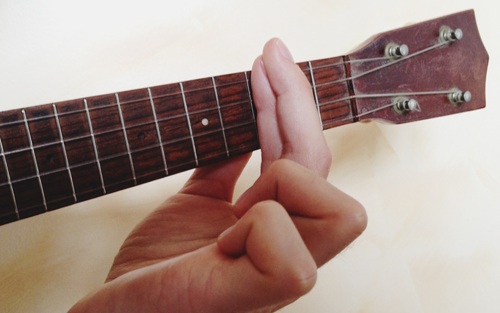
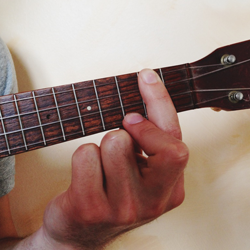
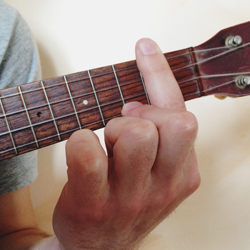
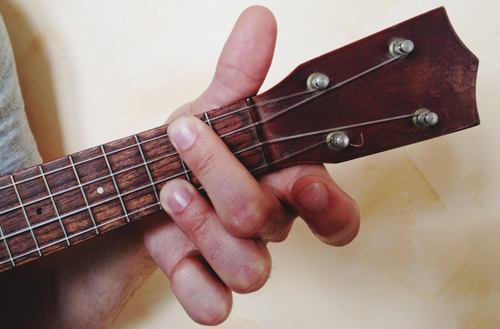

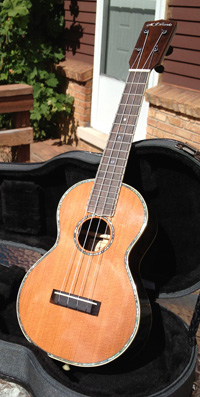 The great thing about working with Mike is that you can customize a ukulele exactly to your liking. If you aren’t sure what you want, just let Mike’s expertise guide you.
The great thing about working with Mike is that you can customize a ukulele exactly to your liking. If you aren’t sure what you want, just let Mike’s expertise guide you.






